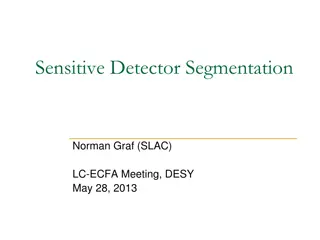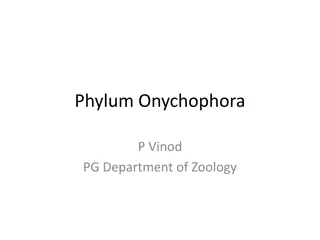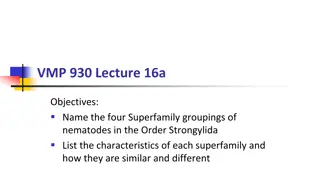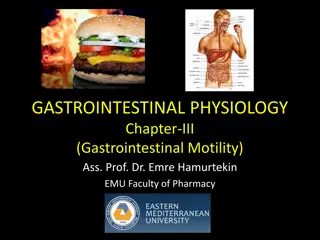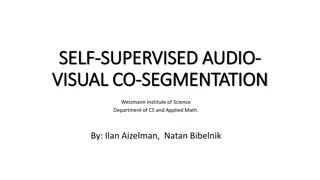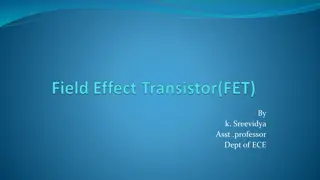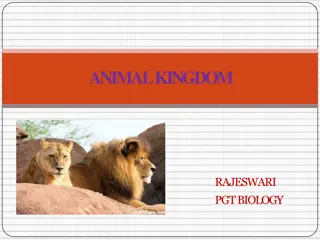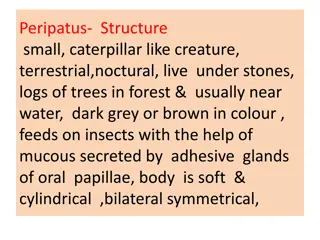Understanding Metamerism in Annelids: Segmentation and Characteristics
Metamerism, the serial repetition of body segments in animals, is a significant architectural plan seen in annelids and other species. This phenomenon involves the presence of similar body segments called metameres, each intricately linked to various organ systems. The occurrence, characteristic features, and types of metamerism, such as true metamerism and homonomous metamerism, showcase the structural complexity and functional unity of these segmented organisms.
Download Presentation

Please find below an Image/Link to download the presentation.
The content on the website is provided AS IS for your information and personal use only. It may not be sold, licensed, or shared on other websites without obtaining consent from the author. Download presentation by click this link. If you encounter any issues during the download, it is possible that the publisher has removed the file from their server.
E N D
Presentation Transcript
Metamerism in annelids Meaning of Metamerism: Metameric segmentation or metamerism is an architectural body plan in some animals in which the similar body segments and organ systems are serially repeated one after another. The similar body segments are called metameres or somites. The animals which exhibit such features called metamerically segmented. Structurally each meta-mere or somite is constructed on the basis of some fundamental plan and usually possesses a part of almost all the body systems.
Occurrence of Metamerism Metamerism is first seen in annelids in animal kingdom. Each segment usually contains appendages, muscles, nerves, blood vessels, excretory organs and a pair of coelomic sacs which are repeated in almost all segments. It is also seen in kinorhynchs, arthropods and most chordates i) Annelid and arthropod line, (ii) Chordate line and (iii) Cestode line.
Characteristic Features of Metamerism: Characteristic Features of Metamerism: Metamerism is always confined to the intermediate (trunk) segments except the anterior acron (head) and a posterior pygidium or telson. . Each metamere represents a mirror image of the other. Segmental structures are interdependent on each other. . They are integrated into a single functional unit. . All the segments of body work in coordination.
Types of Metamerism 1. True Metamerism: The true metamerism is one in which the segmentation of the body develops by the segmentation of the mesoderm. It occurs in annelids (Fig. 17.14), arthropods and in most chordates. The body of annelids consists of a number of segments and the number remains constant in a particular species except in certain cases of asexual reproduction. New segments are not added to the body after maturation.
2. Homonomous Metamerism: If the segments or somites of the animal are all alike, the segmentation is called homonomous metamerism. It is seen in annelids (Fig. 17.2). Each metamere contains segmental blood -vessels, nerves, nephridia and coelomoducts. This is a primitive type of segmentation and is not found in any existing animal because a few anterior segments are specialised to form the head which is called cephalization.










